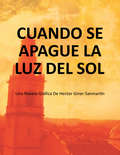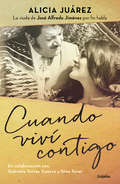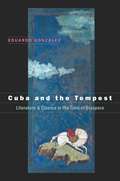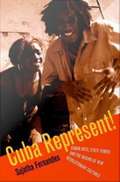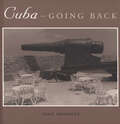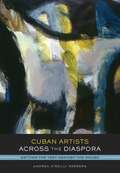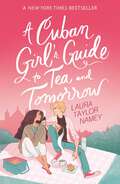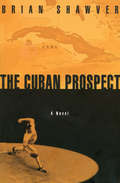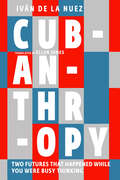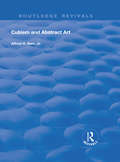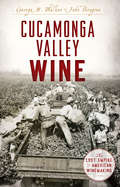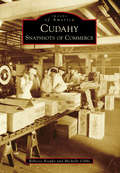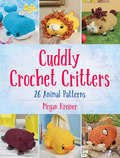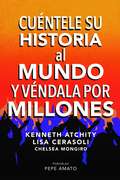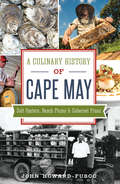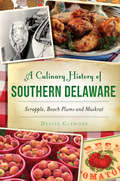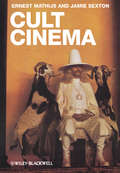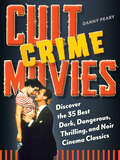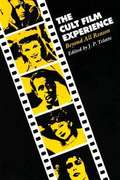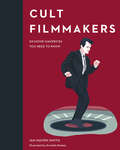- Table View
- List View
CUANDO SE APAGUE LA LUZ DEL SOL
by Hector Giner SanmartinPoema acerca de la última etapa de la vida, la del final de los días de la especie humana. Poema de la localidad de Chella, un pueblo de la provincia de Valencia (España), que cada año por la noche de todos los difuntos, recuerdan a niños y adultos con esta tradicional leyenda. El sol es una estrella que nació hace millones de años y para un futuro bien lejano, se provee su muerte, el libro narra los últimos momentos de vida de la especie humana.
Cuando viví contigo: La viuda de José Alfredo Jiménez por fin habla
by Alicia Juárez Gabriela Torres Gina TovarCuando viví contigo es la voz y la memoria de Alicia Juárez que hoy, por fin, salen a la luz. Los últimos años de José Alfredo Jiménez fueron de una intensidad desbordante. Además de haber sido el momento más exitoso en su carrera como compositor e intérprete, también fueron los años que vivió con Alicia Juárez. Canciones inmortales que impactaron al mundo surgieron con la libertad de un río, del viento, del corazón que encuentra y decide quedarse con La Escuincla, la mujer emblemática durante este fragmento de aliento. La belleza no se tiñe de un solo color ni se arma fácilmente. José Alfredo y Alicia viven una paradoja: tanto la dicha de alcanzar la cima de la plenitud y el gozo, como el vértigo de caer al oscuro y cruel abismo de los sentimientos al límite. Una vida llevada a sus máximos alcances, al disfrute por el mismo hecho de existir, de cantar, de tomar el micrófono y esparcir su voz y sus palabras en infinidad de personas.
Cuba and the Tempest
by Eduardo GonzálezIn a unique analysis of Cuban literature inside and outside the country's borders, Eduardo Gonzalez looks closely at the work of three of the most important contemporary Cuban authors to write in the post-1959 diaspora: Guillermo Cabrera Infante (1929-2005), who left Cuba for good in 1965 and established himself in London; Antonio Benitez-Rojo (1931-2005), who settled in the United States; and Leonardo Padura Fuentes (b. 1955), who still lives and writes in Cuba. Through the positive experiences of exile and wandering that appear in their work, these three writers exhibit what Gonzalez calls "Romantic authorship," a deep connection to the Romantic spirit of irony and complex sublimity crafted in literature by Lord Byron, Thomas De Quincey, and Samuel Taylor Coleridge. In Gonzalez's view, a writer becomes a belated Romantic by dint of exile adopted creatively with comic or tragic irony. Gonzalez weaves into his analysis related cinematic elements of myth, folktale, and the grotesque that appear in the work of filmmakers such as Alfred Hitchcock and Pedro Almodovar. Placing the three Cuban writers in conversation with artists and thinkers from British and American literature, anthropology, philosophy, psychoanalysis, and cinema, Gonzalez ultimately provides a space in which Cuba and its literature, inside and outside its borders, are deprovincialized.
Cuba hasta siempre
by Magdalena SoléMagdalena Solé first visited Cuba in 2011 and has returned every year since, enchanted by the place and the people who live in this slender stretch of land. Her photographs reveal the stirrings of transformation, however subtle and hard to see, and reflect a Cuba that is both tough and vulnerable. Cuba hasta siempre consists of more than 150 full-color photographs taken by Solé, accompanied by a foreword written by Time columnist and travel writer Pico Iyer. With minimal text, this book offers a view of Cuba beyond the tourist trade and the wealthy upper class. The photographs portray everyday settings and people engaged in daily tasks. A visual encounter with magical realism, this collection constructs an atmosphere of pervasive timelessness, a photographic time capsule. Memorabilia and objects from Cuba’s revolutionary past linger in the present, while life goes on. These soulful images offer a new visual perspective on Cuba past and present. The Wall Street Journal called Solé’s images “lushly colorful,” “formally striking,” “restless,” and “electrify[ing].”
Cuba Loves Baseball: A Photographic Journey
by Ira Block Bob Costas Sigfredo BarrosAccording to the New York Times, Cuba is at an historic turning point. As Cuba catches up with political and economic changes, baseball will inevitably catch up and change as well. In Cuba Loves Baseball, photographer Ira Block, who has spent the past three years photographing the culture of Cuba through baseball, has assembled more than one hundred images of baseball players of all ages. In doing so, Block helps to preserve baseball's enduring presence in Cuba. The colorful photos cover everything from grass roots baseball to the pro teams, from portraits of old-timers to children playing baseball in the streets, and from exuberant fans at stadiums to vendors selling traditional food before the games. Cuba Loves Baseball incorporates sport with culture in a country that has been "closed" for so many years. It makes the perfect gift for sports fans, people interested in Cuba and travel, men and women who played baseball as children in cities or rural areas, and parents who have children playing baseball now.
Cuba Represent!: Cuban Arts, State Power, and the Making of New Revolutionary Cultures
by Sujatha FernandesIn Cuba something curious has happened over the past fifteen years. The government has allowed vocal criticism of its policies to be expressed within the arts. Filmmakers, rappers, and visual and performance artists have addressed sensitive issues including bureaucracy, racial and gender discrimination, emigration, and alienation. How can this vibrant body of work be reconciled with the standard representations of a repressive, authoritarian cultural apparatus? In Cuba Represent! Sujatha Fernandes--a scholar and musician who has performed in Cuba--answers that question. Combining textual analyses of films, rap songs, and visual artworks; ethnographic material collected in Cuba; and insights into the nation's history and political economy, Fernandes details the new forms of engagement with official institutions that have opened up as a result of changing relationships between state and society in the post-Soviet period. She demonstrates that in a moment of extreme hardship and uncertainty, the Cuban state has moved to a more permeable model of power. Artists and other members of the public are collaborating with government actors to partially incorporate critical cultural expressions into official discourse. The Cuban leadership has come to recognize the benefits of supporting artists: rappers offer a link to increasingly frustrated black youth in Cuba; visual artists are an important source of international prestige and hard currency; and films help unify Cubans through community discourse about the nation. Cuba Represent! reveals that part of the socialist government's resilience stems from its ability to absorb oppositional ideas and values.
Cuba—Going Back
by Tony MendozaImagine being unable to return to your homeland for thirty-six years. What would you do if you finally got a chance to go back? In 1996, after travel restrictions between the United States and Cuba were relaxed, Cuban exile Tony Mendoza answered that question. Taking his cameras, notebooks, and an unquenchable curiosity, he returned for his first visit to Cuba since the summer of 1960, when he emigrated with his family at age eighteen. In this book he presents over eighty evocative photographs accompanied by a beautifully written text that mingles the voices of many Cubans with his own to offer a compelling portrait of a resilient people awaiting the inevitable passing of the socialist system that has failed them. His photographs and interviews bear striking witness to the hardships and inequalities that exist in this workers’ "paradise," where the daily struggle to make ends meet on an average income of eight dollars a month has created a longing for change even in formerly ardent revolutionaries. At the same time, Cuba—Going Back is an eloquent record of a personal journey back in time and memory that will resonate with viewers and readers both within and beyond the Cuban American community. It belongs on the shelves of anyone who values excellent photography and well-crafted prose.
Cuban Artists Across the Diaspora
by Andrea O'Reilly HerreraAn important contribution to both diasporic and transnational studies and discussions of contemporary Cuban art, Cuban Artists Across the Diaspora ultimately testifies to the fact that a long tradition of Cuban art is indeed flourishing outside the island.
A Cuban Girl's Guide to Tea and Tomorrow: Soon to be a movie starring Kit Connor (Cuban Girl's Guide Ser.)
by Laura Taylor NameyLove isn't always part of the plan . . . A charming, heartwarming story following a Miami girl who unexpectedly finds love – and herself – in a small English town. Soon to be a movie starring Heartstopper's Kit Connor and Pretty Little Liars' Maia Reficco! For Lila Reyes, a summer in England hadn't been on the cards. Certainly not one stuck in the small town of Winchester with a lack of sun and zero Miami flavour. But when Lila meets Orion Maxwell in the local tea shop, her nightmare trip starts to look up. With a bright new future suddenly on the horizon, will Lila leave behind everything she's ever planned and follow her heart? A New York Times bestseller and Reese Witherspoon x Hello Sunshine Book Club YA Pick.PRAISE FOR A CUBAN GIRL'S GUIDE TO TEA AND TOMORROW: 'An absolute delight' Rachael Lippincott, author of Five Feet Apart 'An utterly charming read that feels like a treasured recipe that will heal and feed a broken heart.' Nina Moreno, author of Don&’t Date Rosa Santos 'I could live inside Laura Taylor Namey&’s lush, vibrant words forever.' Rachel Lynn Solomon, author of Today Tonight Tomorrow 'This book. THIS BOOK. Laura Taylor Namey has written the coziest love story I&’ve ever had the pleasure to read.' Erin Hahn, author of You&’d Be Mine and More Than Maybe
Cuban Prospect
by Brian ShawverA novel of last-ditch hopes, destiny’s curve balls, and quiet redemption, The Cuban Prospect gloriously projects a harrowing, yet affirming vision. With compassionate intensity and great heart, Brian Shawver, in his powerful debut novel, tells the story of Dennis Birch, a 34-year old failed major league ball player turned minor league scout whose field of dreams has always been baseball. No longer a candidate for baseball greatness himself—if he ever was—Dennis accepts the challenge of smuggling a hot right-handed pitcher out of Cuba in the hope that promoting the greatness of another will somehow confer a small, manageable portion of it on himself. Birch’s innocent belief in the rightness of his mission blinds him to some of the realities of it, and what seems at first to be a straight road to glory and his name on a plaque in Cooperstown, leads him into dangerous, sordid, and morally complex waters. As becomes excruciatingly clear, Fidel Castro's Cuba is much further from the Florida Keys than the miles marked on a map.
Cuban Prospect
by Brian ShawverA novel of last-ditch hopes, destiny's curve balls, and quiet redemption, The Cuban Prospect gloriously projects a harrowing, yet affirming vision. With compassionate intensity and great heart, Brian Shawver, in his powerful debut novel, tells the story of Dennis Birch, a 34-year old failed major league ball player turned minor league scout whose field of dreams has always been baseball. No longer a candidate for baseball greatness himself--if he ever was--Dennis accepts the challenge of smuggling a hot right-handed pitcher out of Cuba in the hope that promoting the greatness of another will somehow confer a small, manageable portion of it on himself. Birch's innocent belief in the rightness of his mission blinds him to some of the realities of it, and what seems at first to be a straight road to glory and his name on a plaque in Cooperstown, leads him into dangerous, sordid, and morally complex waters. As becomes excruciatingly clear, Fidel Castro's Cuba is much further from the Florida Keys than the miles marked on a map.
The Cuban Prospect
by Brian ShawverWith disarming intensity, humor, and great heart, Brian Shawver tells the story of Dennis Birch, a washed up thirty-four-year-old failed ball player turned minor league scout whose field of dreams has always been baseball. No longer a candidate for baseball greatness himself—if he ever was—Dennis accepts the challenge of smuggling a hot left-handed pitcher out of Cuba in the hope that promoting the greatness of another will somehow confer a small, manageable portion of it on himself. A novel of last-ditch hopes, destiny’s curve balls, and quiet redemption, The Cuban Prospectprojects a vision at once humorous, harrowing, and affirming.
Cubanthropy: Two Futures That Happened While You Were Busy Thinking
by Iván de La NuezCuban art critic and curator Iván de la Nuez explores the effects of the policies that have tried to constrain or liberate Cuba in recent decades in these sparkling essays of cultural criticism.Essays on Cuba and the Cuban diaspora, on racism and Big Data, Guantánamo and Reggaeton, soccer and baseball, Obama and the Rolling Stones, Europe and Donald Trump—de la Nuez approaches his criticism with singularity of purpose. In Cubanthropy he does not set out to explain Cuba to the world, but rather to put the world into a Cuban context.&“Nothing explains our vexed world quite like Cuba and no one anywhere writes more brilliantly, more prophetically, more impossibly than Iván de la Nuez. As in all of his finest work, Cubanthropy delivers you beyond your old horizons into a realm of startling possibilities. Do not miss this extraordinary book or this extraordinary warlock of a writer.&” —Junot Díaz, author of This Is How You Lose Her&“Cubanthropy may just be the smartest writing on Cuba—and beyond—I&’ve read in ages. Insightful, unsparing, funny, and with an unerring eye for the paradoxical, Iván de la Nuez has written the definitive compilation on 21st-century Cuba. Essential reading for all who care about how the past, present, and future are disturbingly converging on the island, and off.&” —Cristina García, author of forthcoming Vanishing Maps
Cubism and Abstract Art (Routledge Revivals)
by Alfred H. Barr, Jr.Originally published in 1936, in this classic account of the development of abstract art Alfred Barr analyses the many diverse abstract movements which emerged with bewildering rapidity in the early years of the twentieth century, and which had an impact on every major form of art. Barr traces the history of nonrepresentational art from its antecedents in late nineteenth-century painting in France – Seurat and Neo-Impressionism, Gauguin and Synthetism, and Cézanne – through abstract tendencies in Dada and Surrealism. He distinguishes two main trends in abstract art: the geometrical, structural current as it developed in Cubism and later in Constructivism and Mondrian, and the intuitional, decorative current running from Matisse and Fauvism through Kandinskt and, later, Surrealism. He shows how individual movements influenced one another, and how many artists experimented with more than one style. Barr also discusses the involvement of a number of abstract movements in architecture and the practical arts – the Bauhaus in Germany, de Stijl in Holland, Purism in France, and Suprematism and Constructivism in Russia.
Cucamonga Valley Wine: The Lost Empire of American Winemaking (American Palate)
by George M. PeragineThe Cucamonga Valley was once America�s largest wine-producing region, crafting quality vintages decades before Napa and Sonoma. Secondo Guasti, an ambitious and enterprising Italian immigrant, established the region�s first vineyard in 1901, and others soon followed. Wineries like the Vai Brothers, Padre, Galleano, Brookside and more made the valley the epicenter of a burgeoning industry. Not even Prohibition could halt production. While domestic breweries and distilleries shuttered, Cucamonga�s brandy and sherry continued to be legally made for culinary and medicinal purposes. Yet by the late 1970s, harvests had dwindled and vineyards vanished. Urbanization, vine disease and property taxes effectively ended production. Today, local vintners and wine enthusiasts are reviving the region�s proud heritage. Authors George M. Walker and John Peragine uncork a legacy too delectable to die.
Cudahy: Snapshots of Commerce (Images of America)
by Michelle Gibbs Rebecca RoepkeCudahy's commerce began with Patrick Cudahy, an Irish immigrant who started a meatpacking business in 1892. He invited other industrialists to follow him to the farmlands southeast of Milwaukee, and soon nationally known companies like Ladish, Federal Rubber, and George Meyer opened factories in the new city. Smaller businesses like Adamczyk's Meat Market, Dretzka's Department Store, Pinter's Inn, and Sullivan's Cigar Shop thrived amidst a growing population. With the gradual loss of heavy industry after World War II and the rise of retail box stores, Cudahy has strived to attract commercial and light manufacturing companies like the Gift Shoppe, Milwaukee Cylinder, National Tissue, and Angelic Bakehouse. Cudahy started as--and continues to be--a small town with big opportunities.
Cuddly Crochet Critters: 26 Animal Patterns
by Megan KreinerCuddly Crochet Critters introduces 26 soft, huggable, pillow-like animals that are easy projects for beginners and will be loved by children and adults of all ages. Fashioned from super-bulky, machine-washable, chenille-style yarn, the stuffed animals can be completed in just a few hours. These cuddly critters make great pillows for a child's nap time, homey accessories for a dorm room, comfy companions for travel, and great gifts, too!Based on the popular Japanese "tsum tsum" style, each project starts with a standard body shape and requires just some basic crochet stitches. As an added bonus, there are 12 additional "critter combinations" to make! Mix and match pattern pieces to create a koala, a zebra, a narwhal, and more.
Cuéntele su Historia al Mundo y Véndala por Millones
by Kenneth Atchity Lisa CerasoliCuéntele su Historia al Mundo y Véndala por Millones, es un libro infaltable tanto para escritores como para guionistas. Posee todo aquello que no le dicen a uno mientras cursa una carrera relacionada con la creación literaria. Pero no solamente son los meros datos de usos y costumbres de los mercados editoriales, también de los nuevos mercados y las posibilidades de una edición electrónica sin pasar por las casas editoriales. ¡Ni hablar de hacer que su historia esté "en forma" para la soñada posibilidad de que su libro se convierta en una película! Este libro lo ayudará efictivamente a contar su historia al mundo, y lo ayudará a venderla por millones!!!
Un cuento de garabatos (¡Arriba la Lectura! Read Aloud Module 1 #2)
by Andrew Larsen Mike LoweryNIMAC-sourced textbook
Culinary History of Cape May, A: Salt Oysters, Beach Plums & Cabernet Franc (American Palate)
by John Howard-FuscoCape May is America’s first seaside resort, and with that comes a mouthwatering food history. The New York Times even proclaimed the city “Restaurant Capital of New Jersey.” The first settlers, the Kechemeche of the Lenape tribe, feasted on the fish and wild game in the area. The whaling industry briefly brought attention to the island, but Ellis Hughes’s 1801 advertisement offering seashore entertainment with “fish, oysters, crabs, and good liquors” gave birth to a beachside haven. From the mint juleps to the Sunny Hall Café and the Chalfonte, culinary creativity thrives on the shore. Modern chefs like Lucas Manteca at the Red Store and Brooke Dodds’s Empanada Mamas help keep the unique flair alive. Author John Howard-Fusco traces the roots of the delectable dishes and recipes from long ago to the modern day.
A Culinary History of Southern Delaware: Scrapple, Beach Plums and Muskrat (American Palate)
by Denise ClemonsHistoric farms and waterways crisscross Southern Delaware, connecting its residents to a set of rich culinary traditions. The original Nanticoke inhabitants baked hearty johnnycakes and hunted wild game. Hungry for a taste of home, German settlers developed scrapple from local ingredients. Today's home cooks and chefs draw their bounty from the land and sea for a distinct, seasonal cuisine. Summer strawberries and peaches from local farms and orchards become delectable preserves thanks to treasured family recipes. Come springtime, succulent blue crab reigns supreme. With recipes for regional favorites like beach plum jelly and chicken with slippery dumplings, author Denise Clemons explores the history behind the ingredients and savors the story in every dish.
Cult Cinema: An Introduction (Routledge Media And Cultural Studies Companions Ser.)
by Ernest Mathijs Jamie SextonCult Cinema: an Introduction presents the first in-depth academic examination of all aspects of the field of cult cinema, including audiences, genres, and theoretical perspectives. Represents the first exhaustive introduction to cult cinema Offers a scholarly treatment of a hotly contested topic at the center of current academic debate Covers audience reactions, aesthetics, genres, theories of cult cinema, as well as historical insights into the topic
Cult Crime Movies: Discover the 35 Best Dark, Dangerous, Thrilling, and Noir Cinema Classics (Cult Movies)
by Danny PearyKiss Me, Deadly to Nightmare Alley to The Honeymoon Killers to The American Friend—any fan of crime films will tell you there’s a palpable excitement in living vicariously through the corrupt, seductive, and often downright evil characters that inhabit these shadowy worlds. In this collection of 35 essays drawn from his revered Cult Movies series, cult film specialist Danny Peary examines, dissects, defends, and exalts crime films from his unique and engaging perspective. His writing is a cornerstone of the cult film culture that continues to flourish today. New to this ebook series are Danny Peary’s cult movie checklists for each genre. Every crime fan will walk away with newly discovered gems to watch, and a newfound appreciation of his or her favorites.
The Cult Film Experience: Beyond All Reason
by J. P. Telotte"Play it again, Sam" is the motto of cult film enthusiasts, who will watch their favorite movie over and over, "beyond all reason. " What is the appeal of cult movies? Why do fans turn up in droves at midnight movies or sit through the same three-hanky classics from Hollywood's golden era? These are some of the questions J. P. Telotte and twelve other noted film scholars consider in this groundbreaking study of the cult film. The book identifies two basic types of cult films-older Hollywood movies, such as Casablanca, that have developed a cult following and "midnight movies," most notably The Rocky Horror Picture Show. Telotte, Bruce Kawin, and Timothy Corrigan offer thought-provoking discussions about why these two types of movies become cult films, the sort of audience they attract, and the needs they fulfill for that audience. Subsequent essays employ a variety of cultural, feminist, ideological, and poststructural strategies for exploring these films. In a section on the classical cult film, the movie Casablanca receives extensive treatment. An essay by T. J. Ross considers Beat the Devil as a send-up of cult films, while another essay by Wade Jennings analyzes the cult star phenomenon as personified in Judy Garland. "Midnight movie madness" is explored in essays on The Rocky Horror Picture Show, movie satires of the 1950s, science fiction double features, and horror thrillers. Illustrated with scenes from favorite movies and written for both fans and scholars, The Cult Film Experience will appeal to a wider audience than the "usual suspects. "Texas Film and Media Studies SeriesThomas Schatz, Editor
Cult Filmmakers: 50 Movie Mavericks You Need to Know (Cult Figures)
by Ian SmithDiscover the iconic personalities behind cult classic films, from David Lynch and Roger Corman to Sofia Coppola, Gordon Parks, John Waters, and more.Whether pioneering in their craft, fiercely unique, or critically divisive, cult filmmakers come in all shapes and guises. Some gain instant fame or notoriety while many others remain anonymous until a cultural shift propels their work into the limelight. In Cult Filmmakers, Ian Haydn-Smith picks a selection of brilliant directors you should know—from industry heavyweights like Tim Burton and David Lynch, to brilliant but lesser-known auteurs such as Alejandro Jodorowsky and Ana Lily Amirpour. With biographical background and critical insight, you’ll discover the minds behind such beloved features as Melancholia, Easy Rider, Lost in Translation and more.Featuring:Ana Lily AmirpourDarren AronofskyJohn CarpenterPark Chan-WookDavid Cronenberg Terry GilliamDennis HopperJim JarmuschHarmony KorineRuss MeyerGaspar NoeQuentin TarantinoMelvin van PeeblesLars von Trier, John WatersAnd many others
